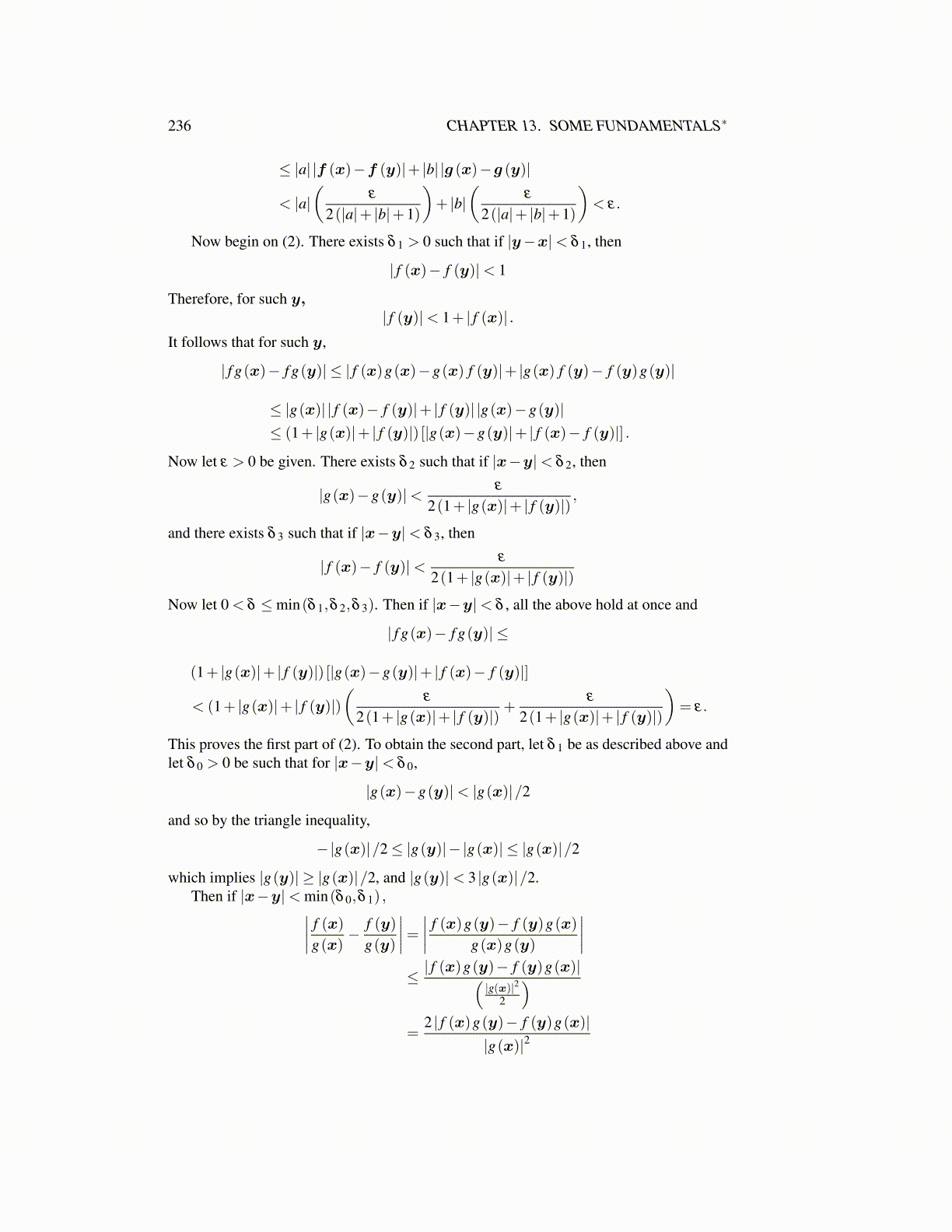
236 CHAPTER 13. SOME FUNDAMENTALS∗
≤ |a| |f (x)−f (y)|+ |b| |g (x)−g (y)|
< |a|(
ε
2(|a|+ |b|+1)
)+ |b|
(ε
2(|a|+ |b|+1)
)< ε.
Now begin on (2). There exists δ 1 > 0 such that if |y−x|< δ 1, then
| f (x)− f (y)|< 1
Therefore, for such y,| f (y)|< 1+ | f (x)| .
It follows that for such y,
| f g(x)− f g(y)| ≤ | f (x)g(x)−g(x) f (y)|+ |g(x) f (y)− f (y)g(y)|
≤ |g(x)| | f (x)− f (y)|+ | f (y)| |g(x)−g(y)|≤ (1+ |g(x)|+ | f (y)|) [|g(x)−g(y)|+ | f (x)− f (y)|] .
Now let ε > 0 be given. There exists δ 2 such that if |x−y|< δ 2, then
|g(x)−g(y)|< ε
2(1+ |g(x)|+ | f (y)|),
and there exists δ 3 such that if |x−y|< δ 3, then
| f (x)− f (y)|< ε
2(1+ |g(x)|+ | f (y)|)
Now let 0 < δ ≤min(δ 1,δ 2,δ 3). Then if |x−y|< δ , all the above hold at once and
| f g(x)− f g(y)| ≤
(1+ |g(x)|+ | f (y)|) [|g(x)−g(y)|+ | f (x)− f (y)|]
< (1+ |g(x)|+ | f (y)|)(
ε
2(1+ |g(x)|+ | f (y)|)+
ε
2(1+ |g(x)|+ | f (y)|)
)= ε.
This proves the first part of (2). To obtain the second part, let δ 1 be as described above andlet δ 0 > 0 be such that for |x−y|< δ 0,
|g(x)−g(y)|< |g(x)|/2
and so by the triangle inequality,
−|g(x)|/2≤ |g(y)|− |g(x)| ≤ |g(x)|/2
which implies |g(y)| ≥ |g(x)|/2, and |g(y)|< 3 |g(x)|/2.Then if |x−y|< min(δ 0,δ 1) ,∣∣∣∣ f (x)
g(x)− f (y)
g(y)
∣∣∣∣= ∣∣∣∣ f (x)g(y)− f (y)g(x)g(x)g(y)
∣∣∣∣≤ | f (x)g(y)− f (y)g(x)|(
|g(x)|22
)=
2 | f (x)g(y)− f (y)g(x)||g(x)|2